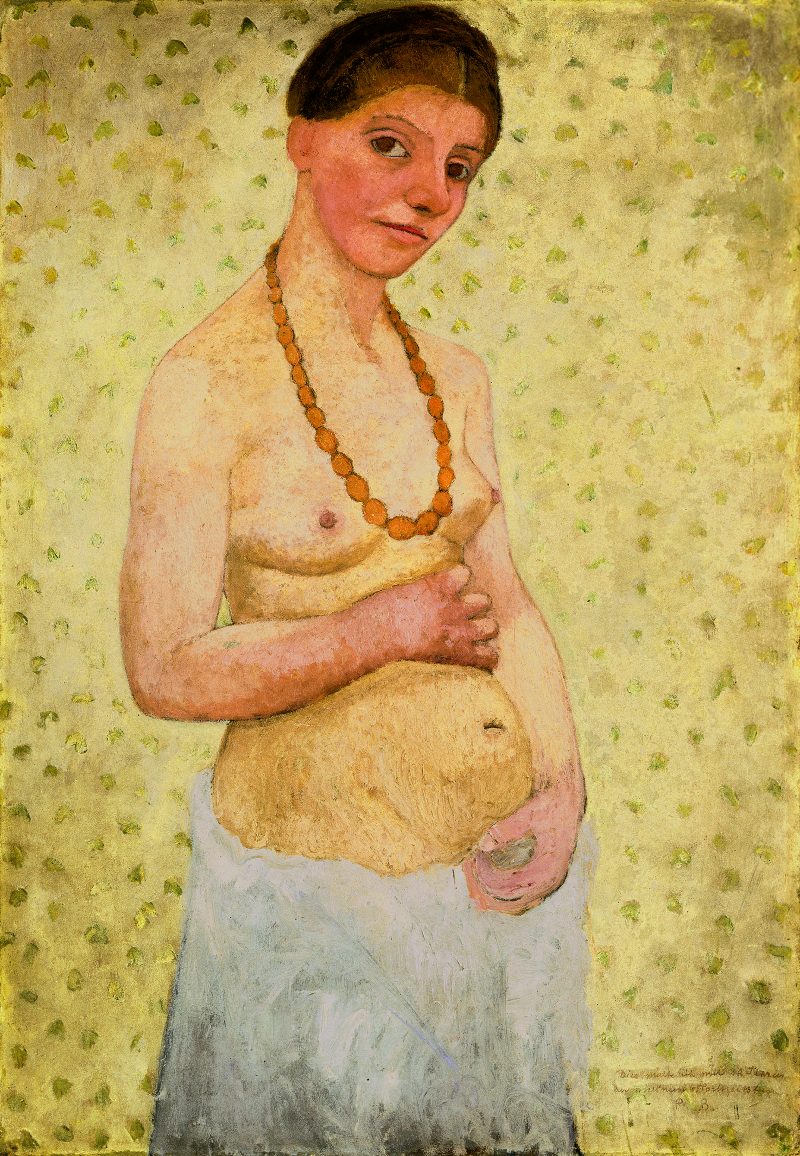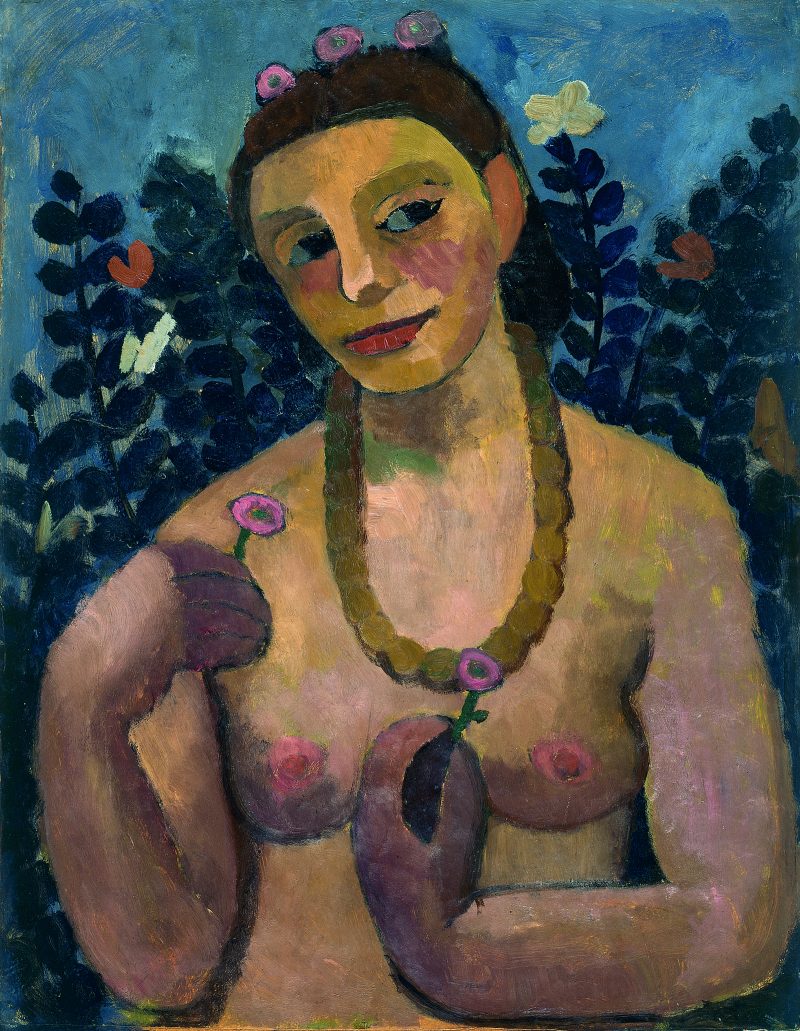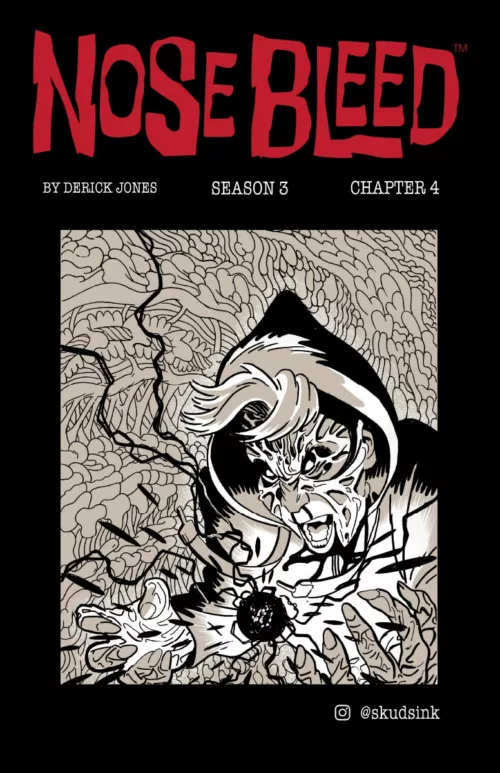Paula Modersohn-Becker: The First Modern Woman Artist, by Diane Radycki (New Haven: Yale University Press, 2013).
All great art challenges our perception, the way we see. When a great work is representational, of the human body, it also changes the perception we have of our own. German painter Paula Modersohn-Becker (1876-1907) was the first to paint 1) nude self-portraits by a woman, 2) nude mother and child portraits, 3) and a large number of nudes of children and adolescents, both boys and girls. Some of the above have full frontality, also groundbreaking. What is artistically unique about Modersohn-Becker is that she paints the figure on its terms, showing its presence with the dignity of its own beauty. Why don’t we know about Paula Modersohn-Becker? The book reveals she showed her work but a few times while she was alive, she died young at age 31, and the modernist style and nudes, made in the last year of her life, 1906, were a shock when discovered. No one quite knew what to make of her work. “Greatness” an early critic said; in the same decade of 1910s another said “odd.” This book is the first in English to give a definitive account of her life, exhibition and critical history, and art historical assessment.
In art history the common practice is to treat the subject chronologically. Radycki breaks the mold here. The structure of the book is unconventional, beginning with the painter’s biography and then breaking away to consider the critical and popular reception of her work, including her diaries and letters, finally rejoining the artist in the fire of her originality in the year before her death due to complications from childbirth. It’s unusual, but it works. Each section is a beautiful set piece. In treating the life, Radycki does a particularly good job showing the interplay of relationships and friends important to the painter’s growth. One friend was the poet Rainer Maria Rilke–famous now, but then a poet whose words inspired her own work. Rilke was a necessary presence then, and as historians now mark it, “as Manet with Baudelaire, as Picasso with Apollinaire, as Modersohn-Becker with Rilke.”

“Self-Portrait, Age 30, 6th Wedding Day” (1906) is the first full-figure nude self-portrait by a woman in western art. The painter gazes directly at us without guile. The round oval of her necklace echoes her round stomach, which gives the illusion of pregnancy, but the painter is not pregnant. The figure itself, like many of van Gogh’s portraits, has no middle ground, only a decorative background. Modersohn-Becker’s self portrait offers a number of pioneering changes in the way we perceive the female body. The female nude, in the western tradition, was painted for the male to see, and the purpose was to entice his sexual desire or appreciation of the figure before him as an object of his sexual desire. Modersohn-Becker breaks that tradition, and, amazingly, it’s the first painting to do so. Her gaze seems to ask us to join the painter’s frank appraisal of her body, and thus herself. Although she was born in the Victorian age, in trips to Paris beginning in 1900, she began to see and paint the nude figure. Nude models who were children or adolescents were common among painters. Her motivation for portraying herself nude was to challenge herself to find and achieve her own visual language.

This work was not exhibited or critically known until decades after her death in 1907. The painting that did receive early critical attention was “Self-Portrait, Nude with Amber Necklace, Half-Length II” (1906). “Beauty and Greatness” was the response of one critic when he saw this within a decade of her death. She holds up a tiny pink flower in each hand, and three flowers crown her hair. The piece has a charming decorative quality, and at the same time, she appears more symbol than self, a woman whose presence embodies her own beauty, whole in her own physical being.
Contemporary artist Jenny Holzer gets this. So does photographer Rineke Dijkstra, included in the book with nude photos of herself with child. Holzer, inspired when young, was able to pay full homage in 2005 with a permanent LED installation, “For Paula Modersohn-Becker” set in the stairwell of the Paula Modersohn-Becker Museum, Bremen.
This is an important book. I believe it is a great one. It’s the first in English to tell of Paula Modersohn-Becker’s life and work as a painter. It establishes, with pioneering research, her justifiable place in art history as the first Modern woman painter, and it lays the groundwork for the inspiration she has provided to the women artists who came after her.
Martha Kearns is the author of Käthe Kollwitz: Woman and Artist, the definitive biography of the graphic artist and sculptor in English.









